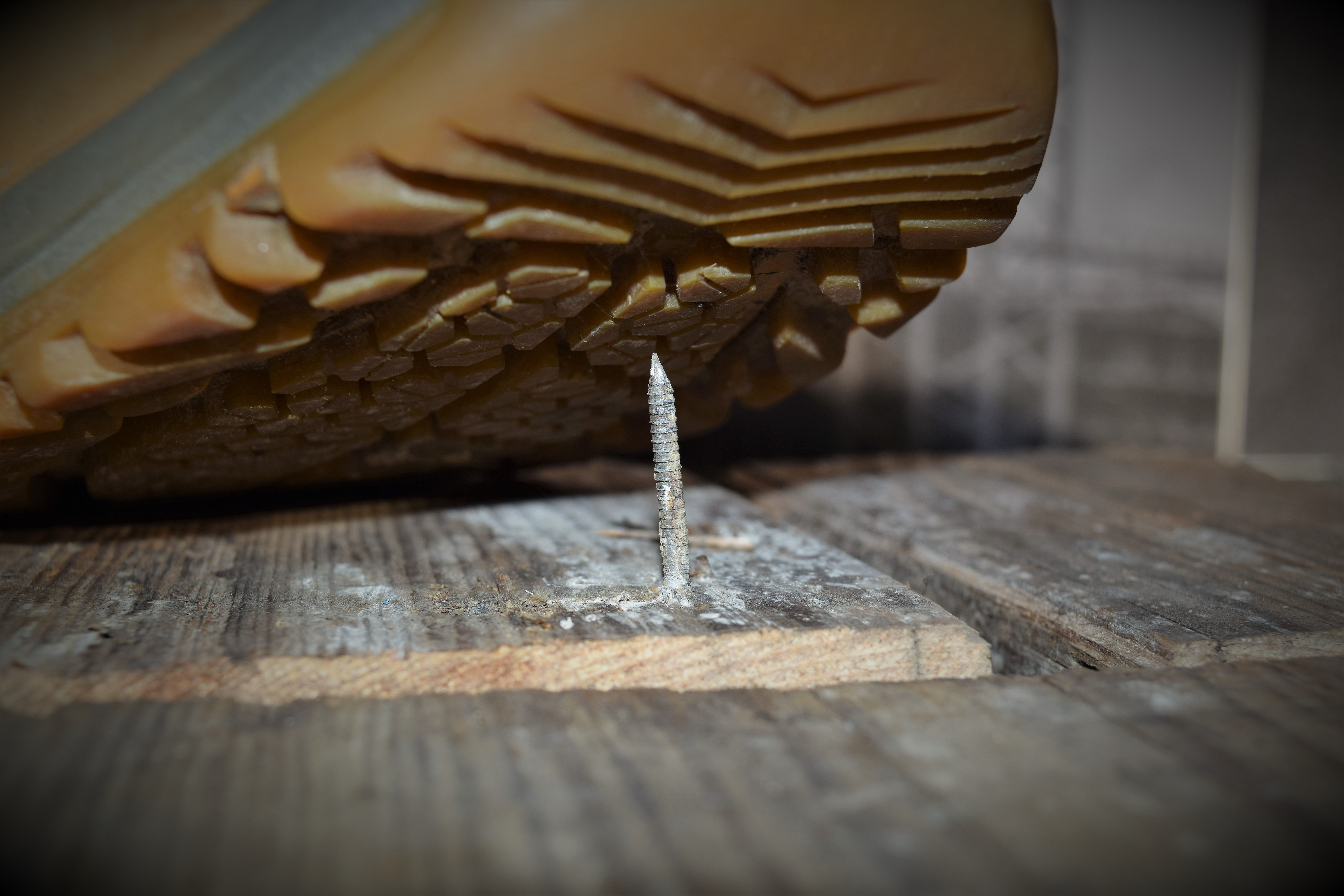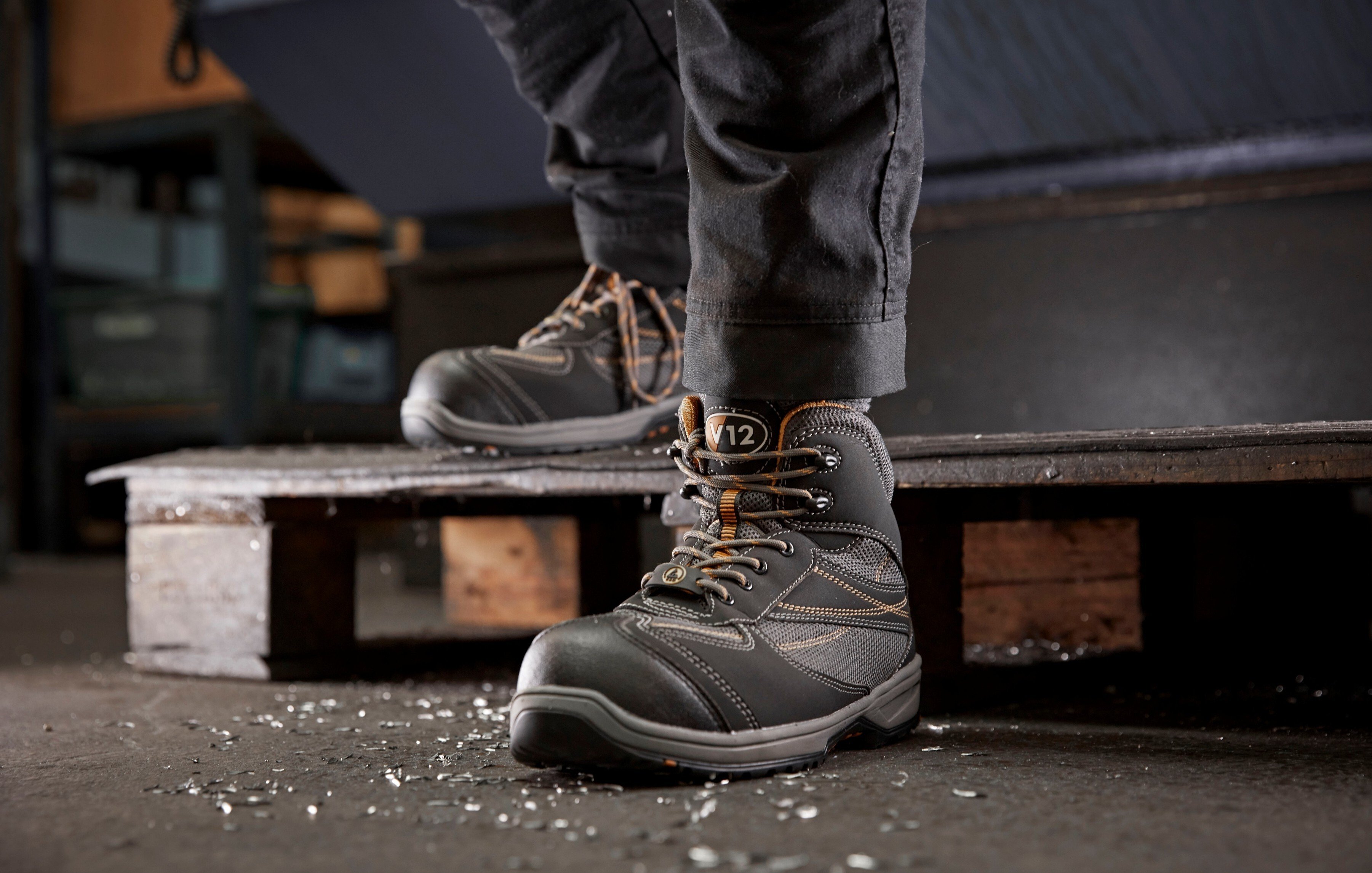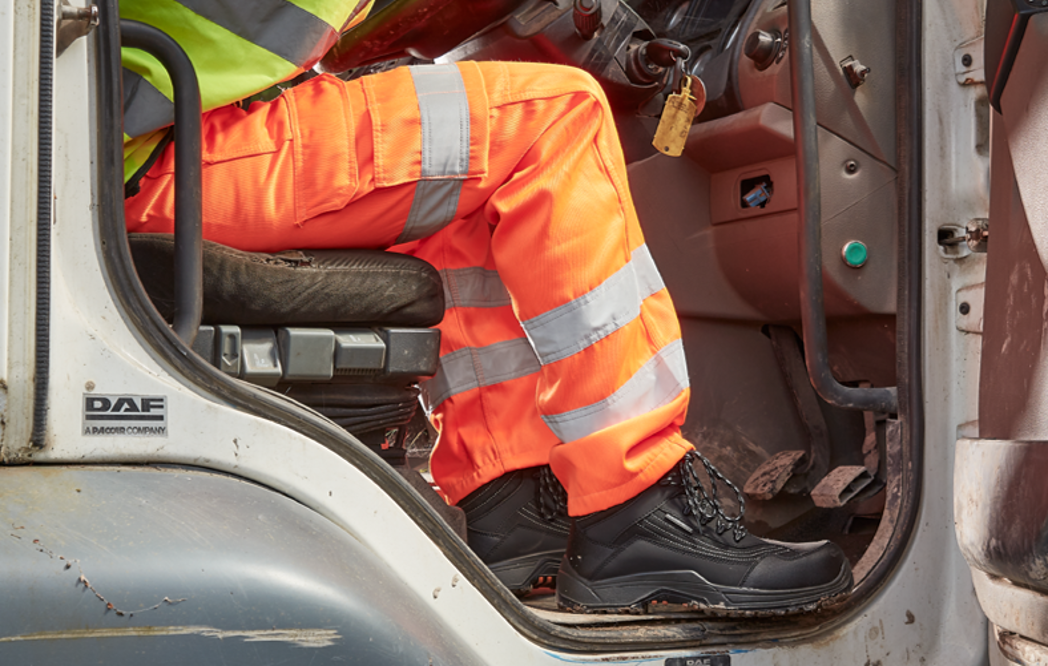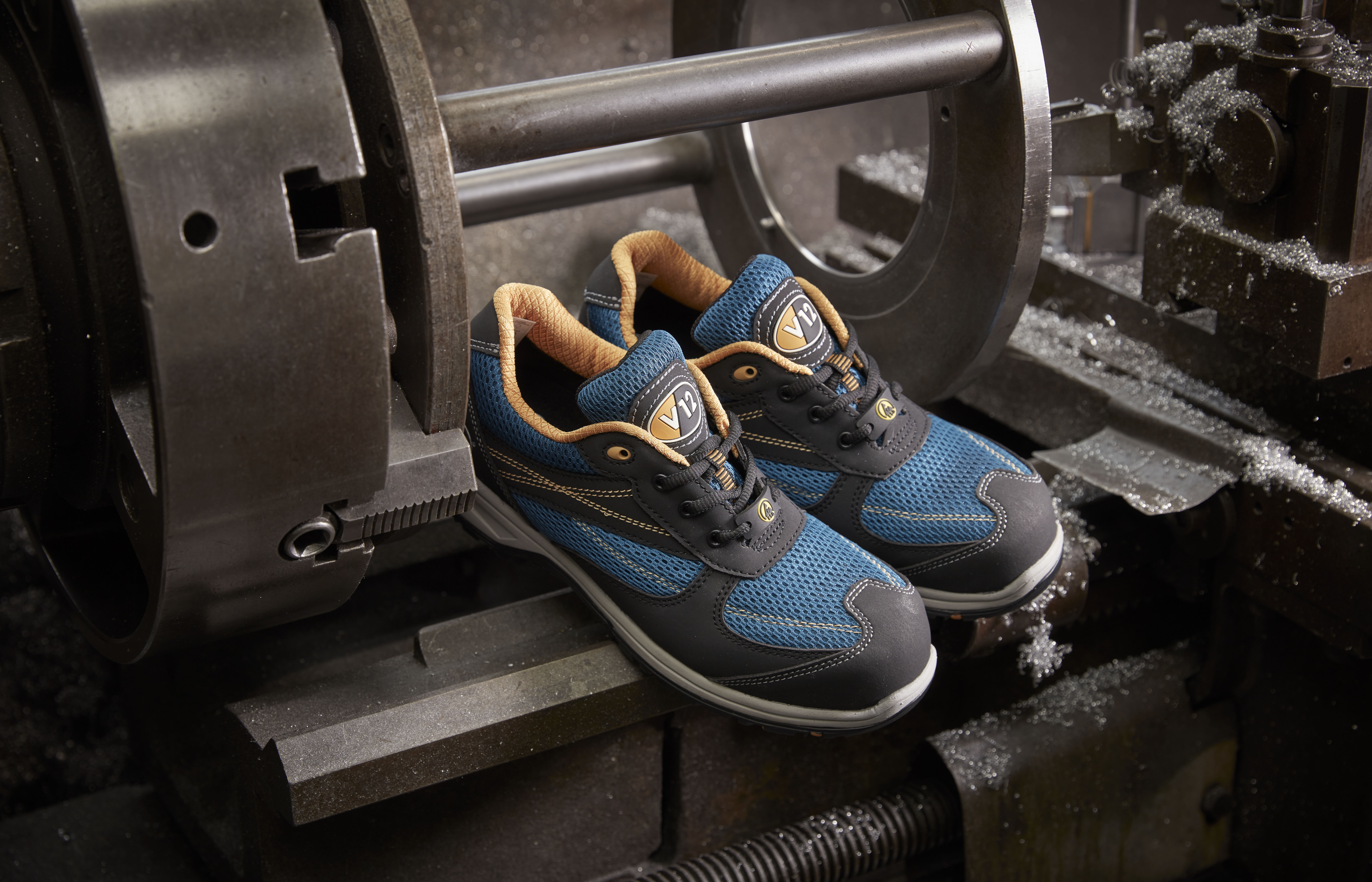How many people do you know who have stood on a nail or a sharp object? At the very least it’s painful - but at the worst, it can drive contamination into the foot.
This is the very reason that a flexible, puncture-resistant midsole is a must in any work boot used where the risk of 'sharps' may occur. That's why anyone on or around a construction site or recycling plant should ensure their footwear has a midsole.The midsole can also be referred to as an 'insert plate' or 'protective insert plate' in testing or manufacturing terms. There are primarily two types of puncture-resistant midsoles available: steel (metallic) or composite (non-metallic). So, which is the better choice? Well read on and you'll be able to decide for yourself:
Pros and cons of Steel Midsole versus Composite
A steel midsole is a foot-shaped piece of steel around 0.5mm thick, cut from a roll of steel and then treated to remove any sharpness or burrs. If selecting a boot with a steel midsole, we always recommend stainless steel as it will not corrode and break down - this is something to watch out for on cheaper footwear, which tends to use lower quality components. There is a degree of flexibility with a steel midsole and they protect the foot against the finest sharp objects and glass, including needles. If there is any downside to steel midsoles, it would be that they are less flexible than composite, and because of the way footwear is constructed, a steel midsole doesn't cover the entire sole area to the edges, rather just the part of the foot most at risk.
Composite inserts are now highly popular. They usually consist of several layers of woven material which are bonded together under intense pressure with hot-melt adhesive. They are mostly used in Strobel stitched constructions, provide great flexibility and protect the entire foot area from edge to edge. If there is a downside, it's the fact they are more expensive than steel, and it's possible that a very fine point-like needle under intense pressure could penetrate between the weave of the fabric. That said, there is little (if any) evidence to corroborate this in real-life situations and it is likely that a robust rubber outsole would bend the needle tip before it struck the midsole material.
Is the test for Composite midsoles the same as for Steel?
They are both tested using a nail with the same force of 1100N. The tip of the nail must not penetrate through the test piece at all. Both types of midsole also undergo 1 million flexes to ensure they do not show signs of cracking, delaminating, or disintegrating. The difference is that the steel midsole is tested for corrosion resistance whereas the composite midsole is tested for penetration, after being subjected to high and low temperatures and the effects of acid, alkali, and fuel oil on the material.
How can I tell if my boots have a midsole?
For boots tested to the old 2011 standard, the following codes denote that your safety footwear has a midsole:-
- S1P
- SBP
- S3
- S5 (in the case of wellies)
The 2022 safety standards update means there will be a change to the coding for the presence of a midsole.
- If your boot's midsole is made of steel, it will simply be marked with a P, as per the original standards
- If your boot has the code PL, this means its midsole is non-metallic (for example composite) and has undergone a penetration test with a nail 4.5 millimetres in diameter.
- If your boot features the code PS, it means it has passed a different penetration test featuring a nail 3 millimetres in diameter.
(This standard will be relevant for people working around perforation risks caused by finer sharp objects such as sewing needles in factories or hypodermic needles in surgical settings)
We shall continue to ensure V12 Footwear meets the very latest standards of safety.





